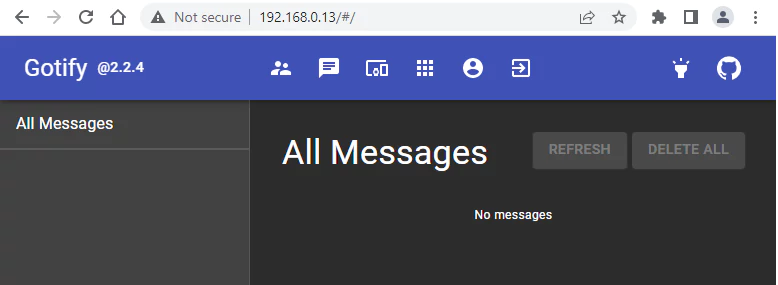Gotify is a notification server for sending and receiving messages. It supports REST API and WebSocket connection. Gotify provides a web UI for managing users, clients and applications.
This tutorial explains how to install Gotify inside a Docker container in the Linux. Commands have been tested on Ubuntu.
Prepare environment
Make sure you have installed Docker in your system. If you are using Ubuntu, installation instructions can be found in the post.
Install Gotify
- Host network
Run the following command to create a container for Gotify that uses host network:
docker run -d --name=gotify --restart=always --network=host \
-v /opt/gotify/data:/app/data \
gotify/server- User-defined bridge network
User-defined bridge network can be used for listening on different port. By default, Gotify service is listening on port 80. It can be changed with -p option.
docker network create app-netdocker run -d --name=gotify --restart=always --network=app-net \
-p 8080:80 \
-v /opt/gotify/data:/app/data \
gotify/serverTesting Gotify
Open a web browser and go to http://<IP_ADDRESS>, where <IP_ADDRESS> is the IP address of the system. Log in to the web UI with the default username (admin) and password (admin).

Uninstall Gotify
To completely remove Gotify, remove its container:
docker rm --force gotifyRemove Gotify image:
docker rmi gotify/serverYou can also remove Gotify data:
sudo rm -rf /opt/gotifyIf a user-defined bridge network was created, you can delete it as follows:
docker network rm app-net



Leave a Comment
Cancel reply